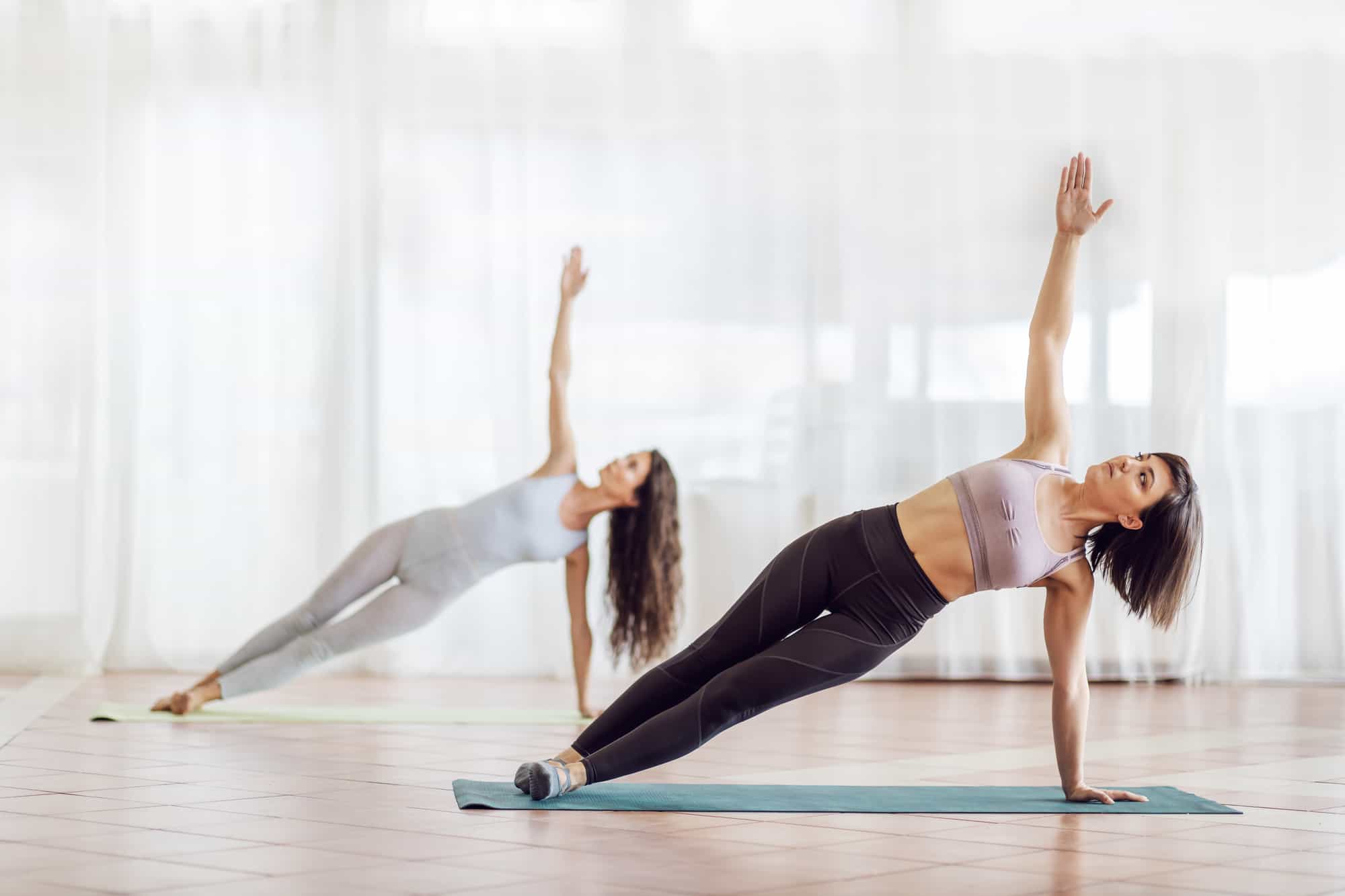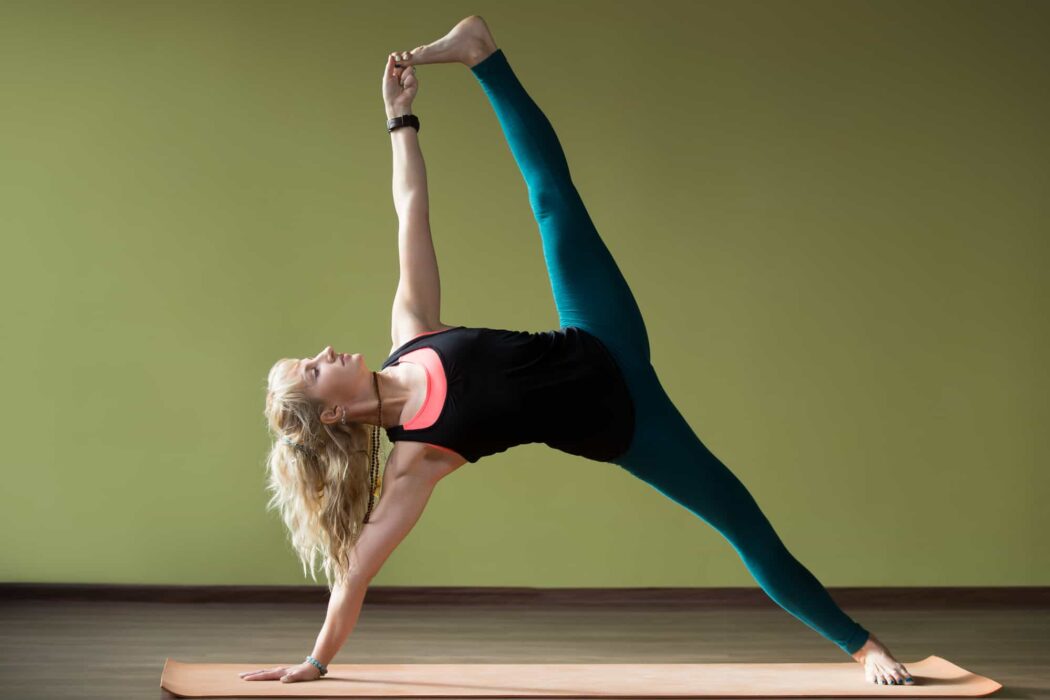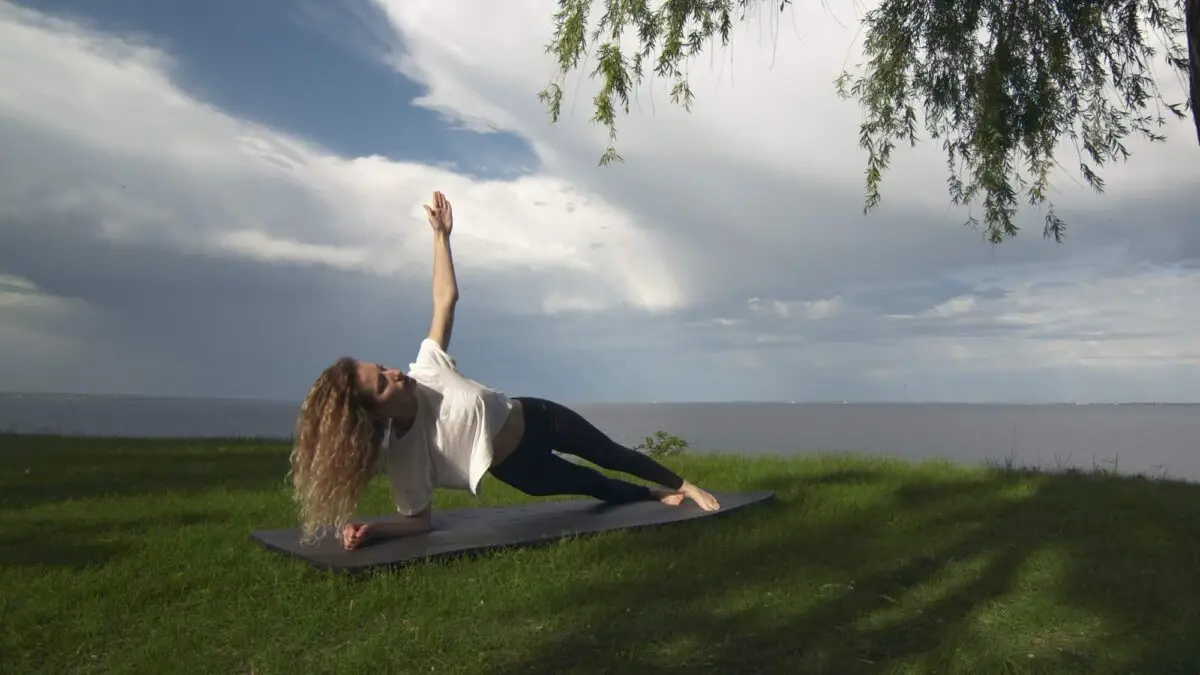Side plank is among the best strength-building poses in yoga. You can increase your arms’ strength and improve balancing skills even if you only do the Side Plank pose with its variations.
Traditional Side plank is performed on one side with one leg up and perpendicular to the floor. That variation is challenging for most newbies. In this article, we’ll explain more accessible Side plank options for beginner and moderate yogis.

How to Get Into It
There are several ways to get into the Side plank pose from:
- Plank pose
- Downward facing dog
- Sitting position
As with all arm balances, palm position is the key to proper grounding and balance. So before you start, check the fingers’ alignment. For this:
- Spread your fingers wide apart
- Thumb creates an angle of 90° with the index finger
- Middle fingers are parallel to each other when you place the palms down on the mat.
- Wrists are under your shoulders.
#1 Plank pose
When you’re in your Plank pose, shift the body weight to one side (let’s say to the right). Ensure your right hand is straight and your fingers are correctly aligned. As you shift the weight, let your soles sink to the right too: press the outer of your right sole to the mat left sole – inner side to the carpet. The big toe on the right foot touches the heel of the left foot.
All the weight is on your right hand. Turn your left shoulder up and your torso so that your left shoulder is above the right shoulder; they are in line.
The left hand is reaching the ceiling. Gaze up.
Alternatively, you can put your left palm on the left hip and gaze up. Gazing down on your right palm will help to balance easier.

#2 Downward facing dog
Start in Downdog. Turn your right foot to the right and press its outer side to the mat. Press the left foot to the right one and shift your body to the right.
#3 Sitting position
You can perform the Side plank from the seated position as well. Check the video guide how to do it:
<div class=”yt-container”><iframe width=”560″ height=”315″ src=”https://www.youtube.com/embed/krrxMqVQPCU” title=”YouTube video player” frameborder=”0″ allow=”accelerometer; autoplay; clipboard-write; encrypted-media; gyroscope; picture-in-picture” allowfullscreen></iframe></div>
Benefits
- Strengthens arms, including biceps and triceps;
- Stretches wrists and prevents wrist injuries
- Promotes balancing skills
- Build solid muscles in the core that in turn improves posture
- Develops better support of the spine with muscles.
Precautions
If you have an injury in any joint in your hand, you should avoid doing a Side plank.
With carpal tunnel syndrome, you can replace the Side plank with a Forearm side plank to reduce the load on your wrist joints.
7 Best Core Exercises to Build Strength at Home
Modifications
Beginner: For newbies, the modification of the Side plank aims to reduce the load on arms by any means—for example, Side plank with knee down or Forearm Side plank.
Side plank with knee down reduces the load on your core. Your knee adds an extra support point.
The forearm side plank allows concentrating more on building strong shoulders, developing abs and back muscles.

Advanced: For moderate and seasoned yogis, try performing full Side plank.
Common Mistakes
The form of the Side plank pose is quite strict. So the most common misalignments take place when any part of the pose is not in its place.
Beginner yogis tend to drop their hips down because of weak side muscles of the core. If this is you, try to activate your obliques and don’t sag in the hip area. If that’s hard, use a roller or any other kind of support under your hip that is closer to the ground.
Arching in the lower is another common misalignment in this pose. Try to keep your spine straight; for this, activate the belly muscles and tuck the tailbone a bit while still maintain the balance.